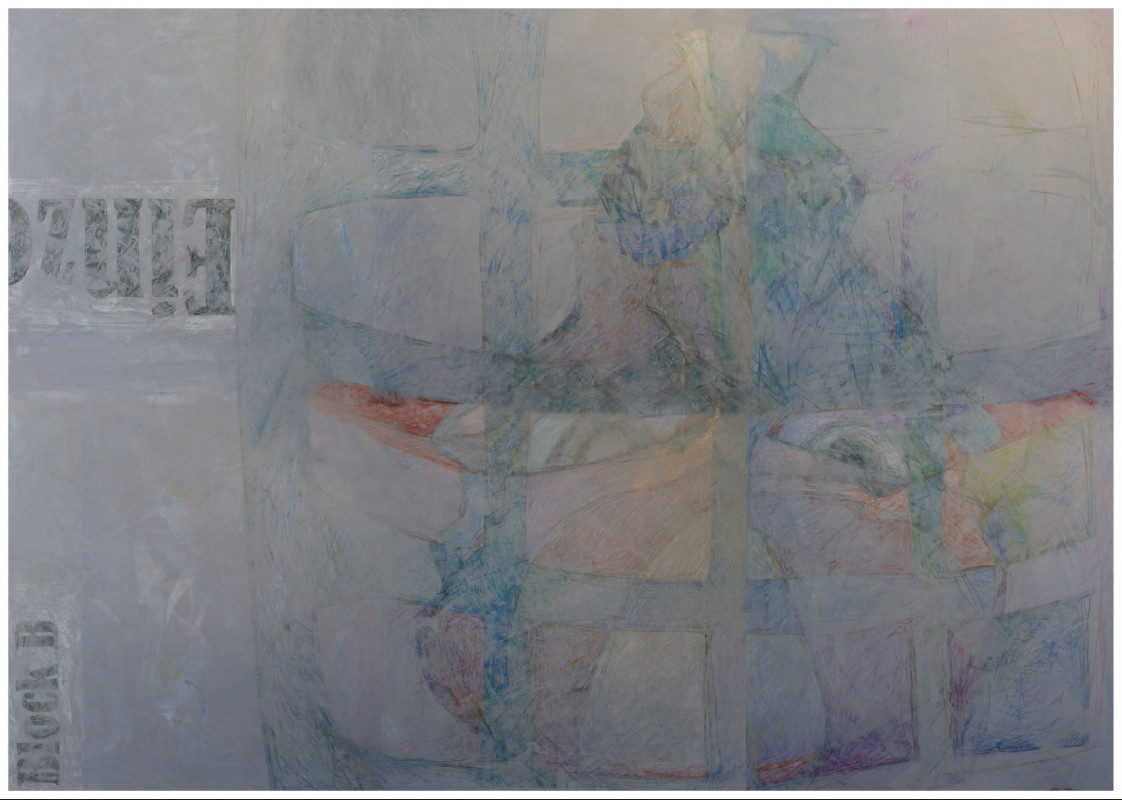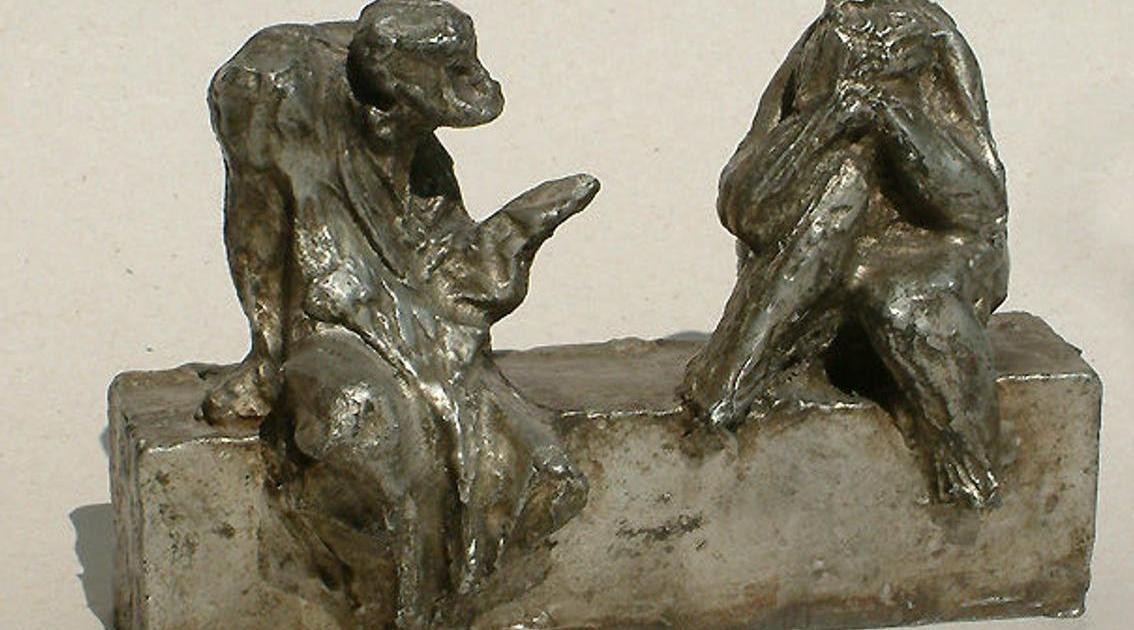Audio guide to the Small Fortress and the following tour of the former ghetto - free to download at https://www.smart-guide.org/destinations/en/small-fortress-terezin/
Learn about the history with us...
Make a ReservationAudio guide to the Small Fortress and the following tour of the former ghetto - free to download at https://www.smart-guide.org/destinations/en/small-fortress-terezin/
COMPLETION OF THE DIGITALIZATION PROJECT (GRANT CLAIMS CONFERENCE) In April 2021, the digitalization center of the Terezín Memorial started its activities. A total of 144,588 scans of collection items were created on the I2S CopiBook Open System A2+ scanner within the three-year project, financed with the help of a Claims Conference grant, of which 128,260 are two-dimensional scans and 16,328 three-dimensional item scans. Scans of non-copyrighted items have been assigned to individual records in the database. Researchers now have the opportunity to view the results of our work in the newly created database of the Terezín Memorial collection - https://www.pamatnik-terezin.cz/sbirka. Digitization of the remaining collection items will continue in the coming years.
Learn about the history with us...
Make a Reservation

Memorial site at the Ohře is located on the left bank of the Ohře river about 1 km downstream from Terezín. Here, in November 1944, the Nazis ordered urns with the ashes of 22,000 dead ghetto inmates to be dumped into the river. Till then the urns were kept in the ghetto columbarium. Immediately after the liberation, a star of David made of birch stakes was placed here to commemorate the event, which was replaced by a granite monument in the early 1970s. A monument with a stylized granite urn and an information board was built near it in 1983. In 2008, a several meter high sculpture of a woman by the sculptor Kiril Postovit was also installed in the left part of this monument. It was revealed on September 21, 2008 as part of the jewish commemoration Kever Avot
The ceremoniall halls and central morgue were also set up in the original fortification on oposite site of the columbarium. To back part were brought dead bodies for last service. In front part were acted common ceremonies.
Opening time - daily, summer time 9am - 6pm / winter time 9am - 5 pm
The Small Fortress served as a prison of the Prague Gestapo for the opponents of Nazi regime in 1940 - 1945.
Sightseeing route:
Permanent exhibitions:
Services for visitors:
The Ghetto museum was opened in the former town school in 1991. Within the WWII the home (heim L417) for Jewish boys (10 - 15 years old) was here.
Permanent exhibition:
Another service for visitors:
The Magdeburg barracks - former army barracks were used as a seat of Jewish self-goverment during the WWII.
Today it is used as a museum with extensive exhibitions about cultural activities of involuntary inhabitants of the ghetto and it follows up the exhibitons of the Ghetto museum.
Permanent exhibitions:
Another offers for visitors:
The columbarium was set up in the original fortification to store the cremated remains of thousands of victims of the ghetto and the prison in the Small fortress after the crematorium was built behind the town walls in 1942.
Permanent exhibition:
The ceremoniall halls and central morgue were also set up in the original fortification on oposite site of the columbarium. To back part were brought dead bodies for last service. In front part were acted common ceremonies.
Permanent exhibition:
The crematorium was built by ghetto prisoners by order of the SS commandery in October 1942. More then 30 000 corps of the victims of the ghetto, prison in the Small fortress and concentration camp in Litomerice were cremated here.
Permanent exhibitons:
The Jewish cemetery around the crematorium is symbolic cemetery. Dead bodies were exhumed and buried in front of the Smal fortress after the war. Into today form it was adapted many times till 1972.
Opening time - daily (except on Saturdays) summer time 10am - 5pm / winter time 10am - 4pm
Admission - single/combination
Address - Mestsky hrbitov 325, Terezin; GPS: 5050288,14.15167
Duration - approx. 20 min.
Parking - car/bus 200 m from the object
Without barriers
The prayer room was used for worshipping during the existence of the ghetto. In terms of decoration, namely its professionally rendered murals and texts, this is unique among all the similar premises used as prayer rooms in the former ghetto.
Replica of the attic - there were small rooms in the attics of residential and farm buildings in Terezin converted into emergency housings of a minimum size and providing a small group of prisoners with at least a little of privacy. In this case, it was undoubtedly a dwelling of craftsmen, who were concentrated in the building and worked in the nearby central ghetto workshops. Fortunately, this emergency residential space above the chapel was not rebuilt later on and could be turned back into a space similar to that of the ghetto times. That way visitors can get an idea about another possible accommodation in the overcrowded ghetto.
Entrance is possible only with a guide to the Terezín Memorial by prior appointment at manager@pamatnik-terezin.cz. The exhibition can also be visited in our virtual tour - section For visitors → Virtual tour → on the map click on No. 5 Serious House)
Terezín transports - permanent exhibition in the former municipal weighing-house which focuses specifically on the transports, giving visitors a detailed insight into how this system functioned. The building containing the new exhibition is located where there used to be a railway line that played a key role in the transports, giving direct access to the ghetto. The exhibition explains the systems used by the Nazis when transporting Jews from the Protectorate of Bohemia and Moravia (and later from other Nazi-occupied territories) to the Terezín ghetto and when dispatching transports onwards from Terezín to the extermination, concentration and slave labour camps – especially to Auschwitz-Birkenau.
Visitors can learn about the tragic history of the so-called evacuation transports that arrived in Terezín during the final months of the war, when other concentration camps were abandoned as the front moved gradually westwards and their prisoners were taken to Terezín. The exhibition also explores the repatriation of the Terezín inmates after their liberation at the end of the war.
The crematorium is not part of the regular sightseeing rout and is located in Litomerice - 7 km from Terezín Memorial. It is necessary to book the visit in advance in writing: manager@pamatnik-terezin.cz, accompanied by the guide of the Terezín Memorial.
The crematorium is possible to visit also virtually
During the last wartime years, when the German industry came under ever mounting pressure from Allied air-raids, the Nazis opted for decentralizing and transferring some of their arms manufacture into underground factories. A limestone quarry under the Bídnice plain near Litoměřice was selected as a site for German war production. Underground factories for the Auto-Union and Osram concerns began to be built in the spring of 1944. The project was codenamed Richard I (Elsabe factory) and Richard II (Kalkspat factory). However, production was launched only in the Elsabe plant. This manufactured components for the HL 230 Maybach engine, used during World War II in German heavy tanks (Panther, Tiger etc.).
The Nazis set up a concentration camp, a branch of the Flossenbürg core camp, near the factories under construction. In the years 1944-1945, some 18,400 inmates passed through the camp, designated as the SS-Kommando B5. These prisoners were primarily from Poland, the Soviet Union, Yugoslavia, Czechoslovakia, France, Belgium, Italy, Germany, Hungary, the Netherlands and Greece. Some four thousand Jews from different European countries constituted a large group among the prison population. During a single year, one in four inmates died due to slave labor and harsh living conditions. The Litoměřice camp, too, witnessed implementation of the Nazi program for liquidating prisoners, known as “Vernichtung durch Arbeit” (destruction by work).
A former brickyard housed the camp´s crematorium built, between 1944 and 1945, by the German company Architekt Neumann. Two furnaces, designed to incinerate six bodies at a time, were installed in a space measuring 20 by 8 meters. Launched into operation in April 1945, the Crematorium incinerated some four hundred victims of the Litoměřice camp as well as 52 inmates, shot dead on May 2, 1945 during the last wartime execution in the Police Prison in Terezín. The furnaces in the Crematorium were heated by coke, brought in by train along a railway siding leading to the building site of the underground factories. A civilian employee, assigned at the order of a local labor office, served as a stoker. He was helped by six inmates from the camp.
Based on the resolution of the Government of the Republic of Poland on the closure of all museums and cultural institutions, the Auschwitz-Birkenau State Museum is also closed from 7 to 29 November 2020!
The message of the Czech exhibition in Auschwitz is to show the mechanism of deportations from the former Protectorate Bohemia and Moravia to Auschwitz on the background of then situation in the country, above all in the context of the occupational politics of Nazi Germany.
Up-to-date information: http://auschwitz.org/en/
In 1993, the Terezín Memorial was commissioned to build and administer the Czech Republic’s official exhibitions abroad, namely in Ravensbrück and Oświęcim (Auschwitz). The exhibition in Ravensbrück was prepared and opened to the public in 1995.
Due to reconstruction of the building the national exhibition of the Czech Republic will be closed until further notice.
Stay informed,
follow our newsletter
In addition to technical cookies, we also use cookies to measure traffic on this website. This allows us to better refine and optimize the site to make it as useful as possible for our users. Detail information